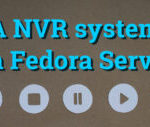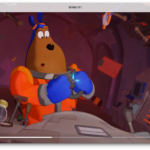Throughout the current year, Fedora aims to become one of the pioneer distributions in discarding Xorg in favor of fully embracing Wayland. After the decision made in March to eliminate the Xorg session from upcoming releases, Fedora now looks to implement this change in another crucial component, its installer.
With the goal of modernizing its installation environment, Fedora has presented a significant update for Anaconda, its default system installer. This update targets the imminent Fedora 41, expected to launch in mid-October.
The intended transition of Anaconda from an X11-based application to native Wayland functionality is a significant move.
The installer currently functions under the X11 system, which has become increasingly cumbersome due to its legacy dependencies. The shift to Wayland is motivated by the necessity to remove these outdated dependencies from Fedora’s installation ISO images.
Furthermore, this alteration aligns with Fedora and Red Hat’s broader objectives of rejuvenating the core systems of their distributions, including CentOS Stream and RHEL.
The move of Anaconda to Wayland seeks to address technical debts and dependency issues inherent in the current X11-based setup. Part of this update involves phasing out TigerVNC, which relies on Xorg server sources, in favor of implementing the Remote Desktop Protocol (RDP) via Gnome Remote Desktop.
An essential adjustment involves the management of keyboard layouts. Currently, the Wayland system lacks a unified API for keyboard control, resulting in inconsistencies during installations.
To combat this issue, the Fedora team intends to integrate the systemd-localed DBus API across all Fedora spins, promoting a more consistent and dependable user experience.
These modifications will enhance the installation process for Fedora users, particularly in remote or graphical setups. By adopting RDP, remote installations will be more secure and efficient. Improved keyboard layout management will reduce anomalies during system configuration.
It is crucial to note that this transition is currently a proposal. Approval from the Fedora Engineering Steering Committee (FESCo), a pivotal governing body overseeing technical decisions in Fedora’s development, is required for the proposal’s realization, although approval is highly anticipated.
For those interested, the proposal is accessible here, with detailed information found here.











